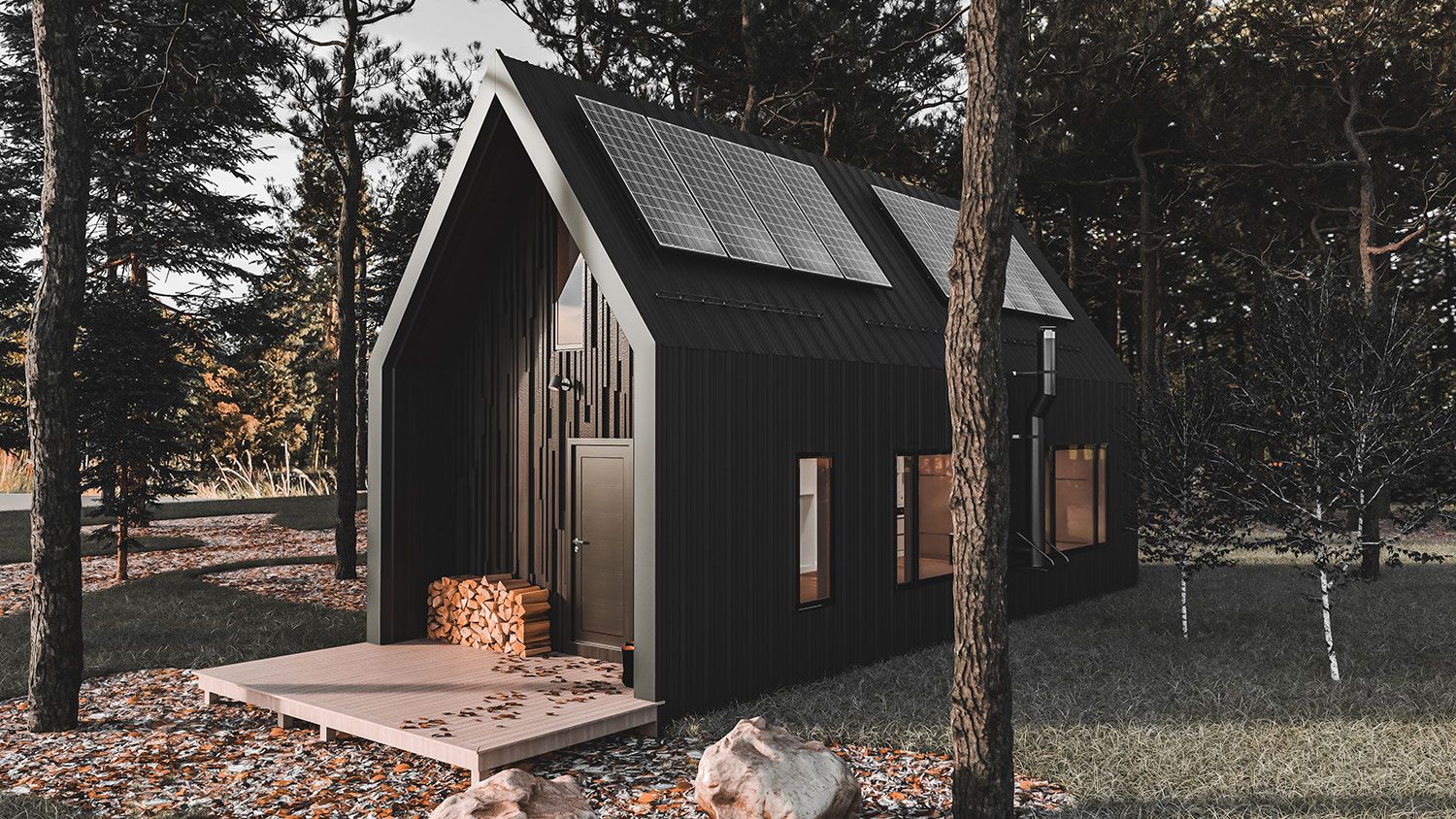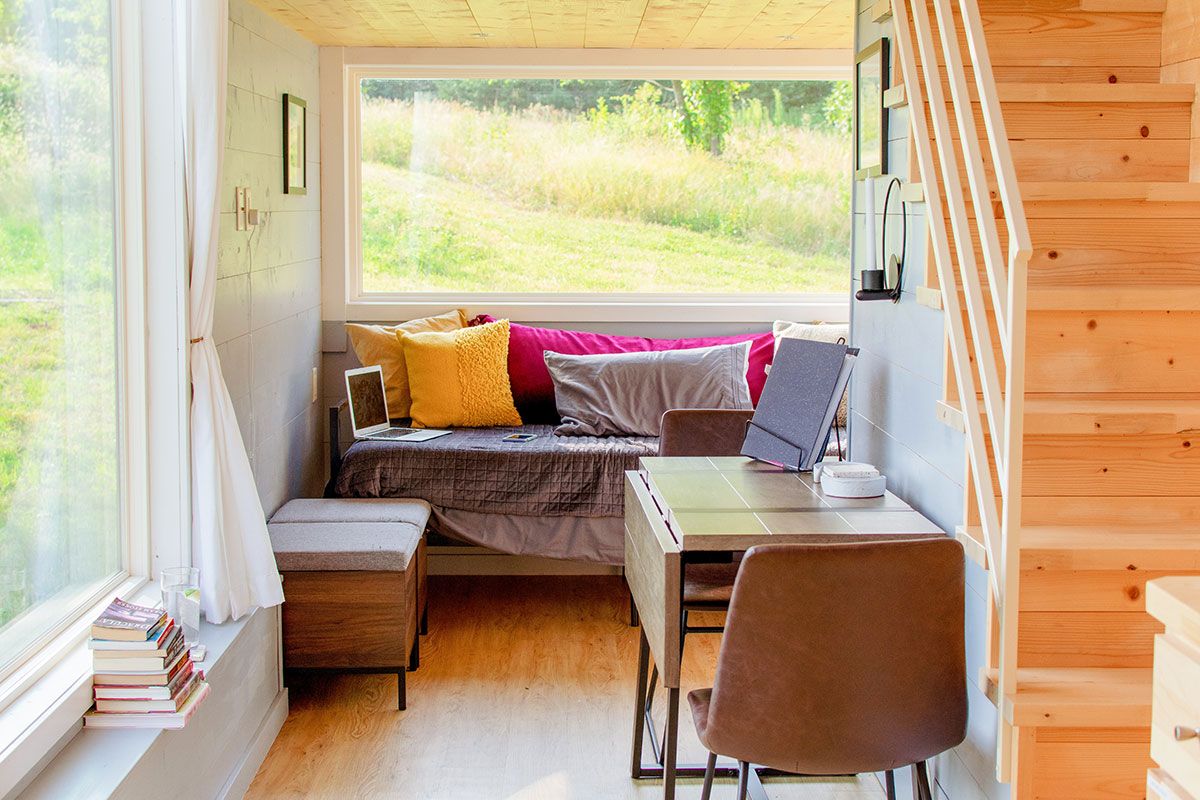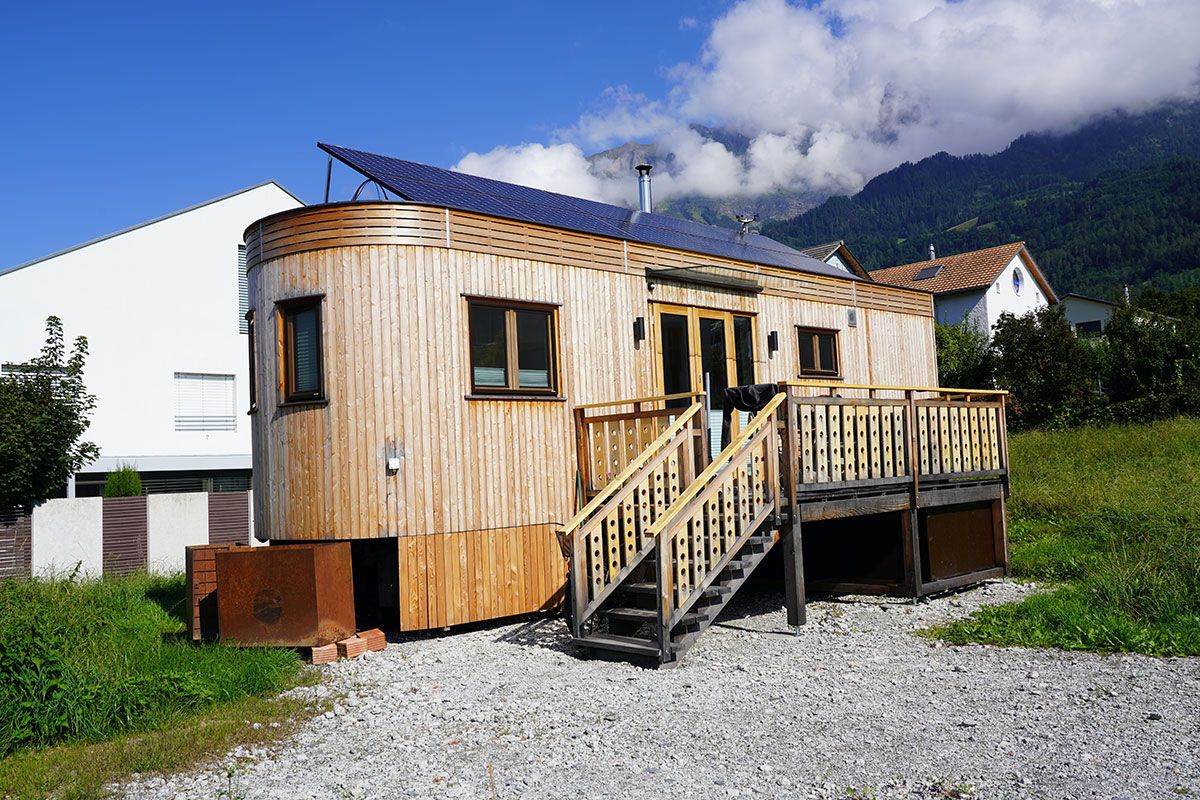Tiny Home Financing and Loan Guide

Swapping large homes for tiny houses may seem like a trend, but it can be a smart financial decision for many homeowners. Before making the move, though, it’s important to understand tiny home financing options, as financing for a tiny home isn’t quite the same as financing for a regular home.
Tiny Home Financing Options
- Personal Loan
- RV Loan
- Home Equity Loan
- Builder Financing
- Cash
- Credit
Tiny home financing is often not as long of a process as securing a traditional mortgage, mostly because a tiny home is generally much less expensive than a regular home. Some lenders offer a special tiny house loan that makes a tiny home purchase easy to manage and finance. Homeowners can also use other types of financing options to get the loan terms they need, like a home equity loan or a personal loan.
Preparing to buy a tiny house requires some thought and consideration of each potential financing option, some of which are better for specific situations, like homebuyers with bad credit or those who want the lowest interest rates possible.
What Is a Tiny House?

A tiny home, also known as a tiny house, mini house, RV home, or portable home, is a downsized version of a traditional home. These houses typically are no larger than 500 square feet, compared to traditional houses that are usually 1200 square feet or more. Many tiny homes can be moved relatively easily, too, allowing homeowners to explore new places and bring their homes with them.
Tiny homes are designed to maximize space despite being so small. They use creative designs to add hidden storage and make the homes livable. For example, steps leading to a bedroom might have a hidden closet underneath them or drawers that pull out of each step for storage. Sometimes, kitchen appliances or living room furniture can tuck into a storage space during the day for homeowners to pull out and use only when needed.
These mini houses are ideal for people who may not be in their homes much or don’t require a lot of space, like a person living on their own, frequent travelers, or couples without children. Tiny homeowners also usually opt for this way of living to save money, as a tiny house is usually much more affordable than a traditional home.
How Much Is a Tiny House?
The average tiny house cost varies between $30,000 and $60,000, or around $150-$300 per square foot. In comparison, traditional homes tend to cost anywhere from $80-$150 per square foot, on average. Although a tiny home is smaller, you may pay more per square foot because there are less square feet to buy, whereas larger homes have many more empty square feet of space, so the cost per sq. ft. is a little cheaper.
Still, with significantly less space to buy, a tiny home can be a much more affordable option than a traditional home, especially when you consider the long-term tiny house cost and the savings it can provide.
Other costs can drive up the price of your tiny home, though, including the land you put it on, transporting costs, and the materials used to build the home. These factors should all be taken into consideration before you buy.
Cost-Affecting Factors to Consider

There are ways to spend less money when buying a tiny home. Consider the following factors that influence tiny home financing and purchase costs.
- Tiny Home Size: As mentioned, the number of square feet in your tiny home can affect the price. Expect to pay an additional $150 per square foot, at minimum, when comparing tiny homes of two different sizes.
- Materials: Like traditional homes, tiny homes can be made with different materials that affect pricing, like metal roofing, higher-quality windows, and more efficient insulation. If you’re having a tiny home built for you, be sure to discuss how various materials will affect the cost.
- Finishings: Opting for upscale finishes in your tiny home will increase costs, although they may not be as significant as they would be in a home with more space. Still, things like expensive light fixtures, efficient appliances, and stone countertops will increase the amount you need for a tiny home loan to purchase your home.
- Wheels Vs. Foundation: A tiny home builder can make a tiny home easily transportable by building it on wheels and a trailer or make it more permanent by building it on a foundation. A foundation-based tiny home is usually the more affordable option because it tends to require less maintenance and holds its value over time.
Hidden Costs to Consider
Several hidden costs can also creep into the overall price you pay for a tiny home. Perhaps the most important consideration is the land on which you’ll place your tiny home. Tiny homes on a foundation may already include their land in their cost, but with other purchases, you might need to finance a land purchase in addition to your tiny home purchase. You should also consider the cost of transporting a tiny home to your land, if necessary.
If using a builder to get your dream tiny home, be sure to factor in the costs of hiring the builder and buying the plans. You might also need to pay extra for quality plumbers, electricians, interior designers, and other people working with the builder to carry out your plans.
Additionally, don’t forget about the cost of homeowners insurance on your tiny home. Some insurance companies specialize in tiny home insurance and, therefore, may be able to give you a better deal than more general companies. Finally, determine if you’ll need to rent a storage unit for extra items you can’t fit into your home, as this will tack on extra house-related costs to your bills.
Tiny Home Financing Options

There are several types of banks, loans, and financing products you can use for tiny home financing. Consider the following options as you compare products, talk to lenders, and decide the best solution for your tiny home.
1. Personal Loan
A personal loan can be a secured loan or unsecured loan used for various purposes. Because they often don’t have as many restrictions as to what you use them for, you could usually use one for tiny house financing. However, depending on the lender and your credit score, a personal loan can carry a high interest rate compared to traditional home loans, which would increase the overall amount you pay for the loan and its monthly payment.
We generally suggest only using a personal loan if you can get an unsecured loan at a lower interest rate than you’d be able to get with other financing products, as may be the case for people with very good credit.
2. RV Loan
Some tiny homes are eligible for financing with an RV loan, which is traditionally reserved for actual motor homes. However, tiny homes on trailers and wheels could meet the standards for an RV loan, depending on the lender’s requirements.
The benefit of an RV loan is that the loan terms usually allow for low, mortgage-like financing for those with a good credit history. Still, you can get RV loans with a shorter repayment term than a mortgage, usually anywhere from 3-10 years, although some are offered for up to 15 years.
3. Home Equity Loan
If you want to buy a tiny home before you sell your current home, you could use a home equity loan for the purchase. However, some lenders may have restrictions on what you can use the loan amount for, so be sure to ask first.
A home equity loan taps into the equity you have in your home. So, if you have $80,000 in equity, you could qualify for up to that amount for a home equity loan, which is enough to pay for most tiny homes. You’ll need to make sure you don’t default on the home equity loan, though, as your current home secures your loan.
4. Builder Financing
Some tiny home builders offer their own financing methods to help homebuyers finance the tiny home of their dreams. Tiny home builders with financing may vary significantly in the interest rates and loan terms available, though. Down payment amounts can also vary. Compare different tiny home builders with financing to see if any options might work better for you than other forms of financing.
5. Cash
If you have enough cash in your savings account to purchase your tiny home, you can consider it as an option. Paying in cash prevents you from having to pay any interest, so it could save you a lot of money in the long run. Plus, you’ll have immediate equity in your tiny home should you need a home equity loan in the future.
6. Credit
Although using a credit card isn’t the best tiny home financing option in most cases, it could work for some homebuyers with large credit lines and low interest rates. This method gives you a way to have an installment loan to pay over time. However, many credit cards with low interest rates still have higher rates than loans for tiny homes.
Can You Get a Mortgage on a Tiny Home?

Home loans vary significantly by lender. Traditional mortgages typically require a home to be a minimum size and homebuyers to borrow a minimum loan amount. Unfortunately, this disqualifies many tiny homes from being financed by a traditional mortgage lender product.
However, some lenders offer a tiny house mortgage with a minimum loan amount. This is usually only the case when a tiny home meets specific requirements, like being built on a permanent foundation rather than a trailer and wheels. Tiny house manufacturers and builders must also meet all building codes for your area for the home to qualify, in most cases.
When you contact a lender, be sure to ask about all your potential options for financing a tiny home. They may have a traditional mortgage product that works for your home. If not, the lender might happily direct you to another lender that can help you.
Your Guide to Tiny Home Financing
The tiny home movement over the past few years is likely more than a passing trend. More and more homeowners are realizing the benefits that a smaller home can provide, especially in more current, uncertain economic times.
If you cannot get a traditional mortgage for your tiny home, there are plenty of other tiny home financing options, including an RV loan, a personal loan, or even using a high-limit credit card. Homebuyers with excellent credit may qualify for extremely low financing rates, allowing them to save over time with tiny home lending.
We suggest checking with the credit union or bank you currently use to discuss potential options for financing a tiny home. Your bank may have better deals for you as a customer than other lenders will, helping you maximize your tiny home savings.